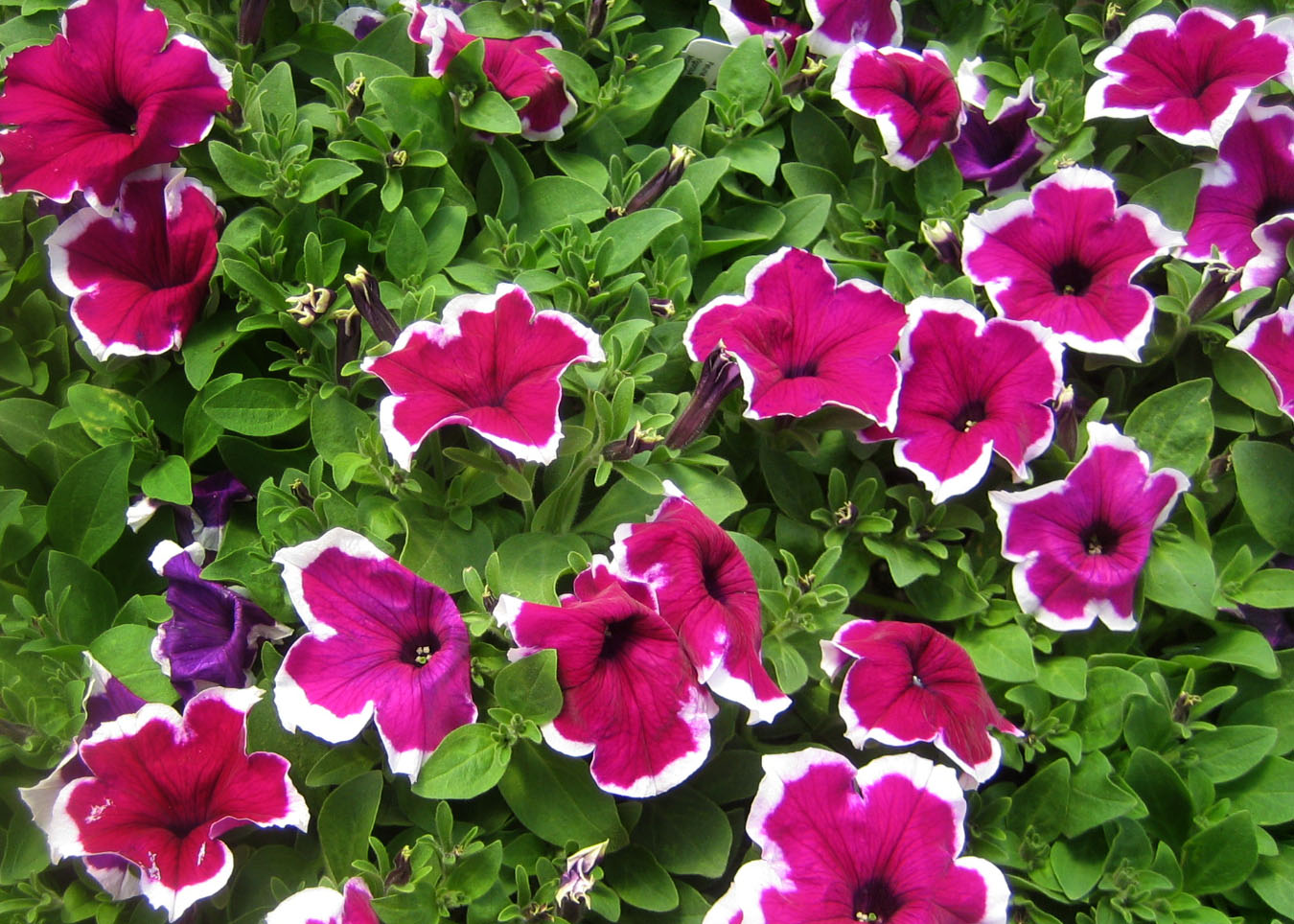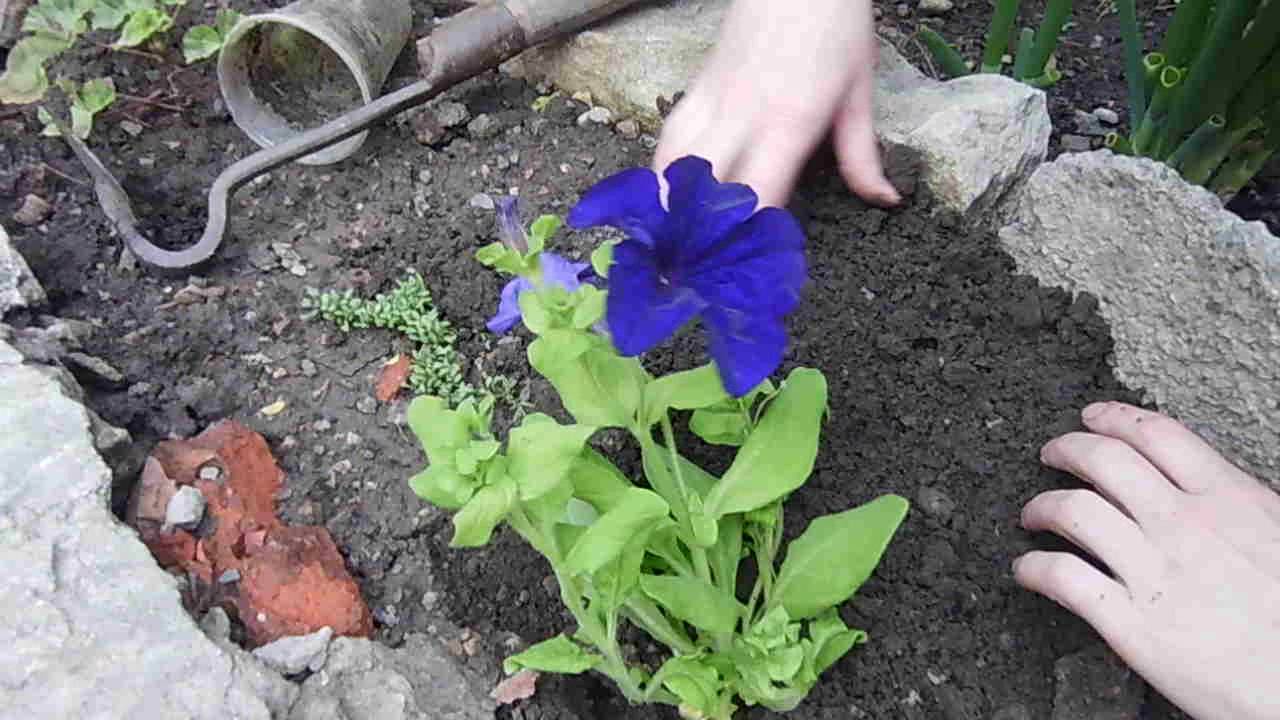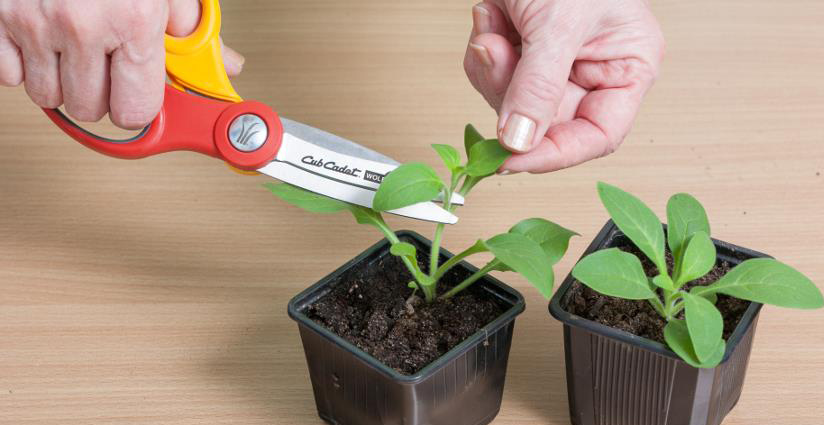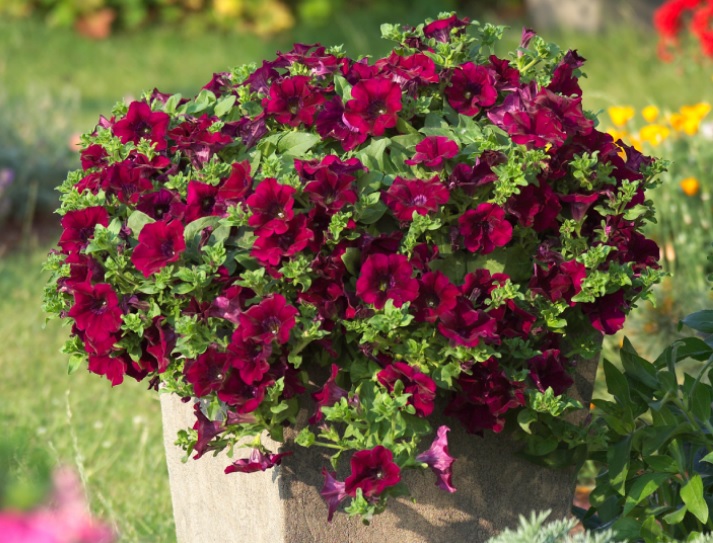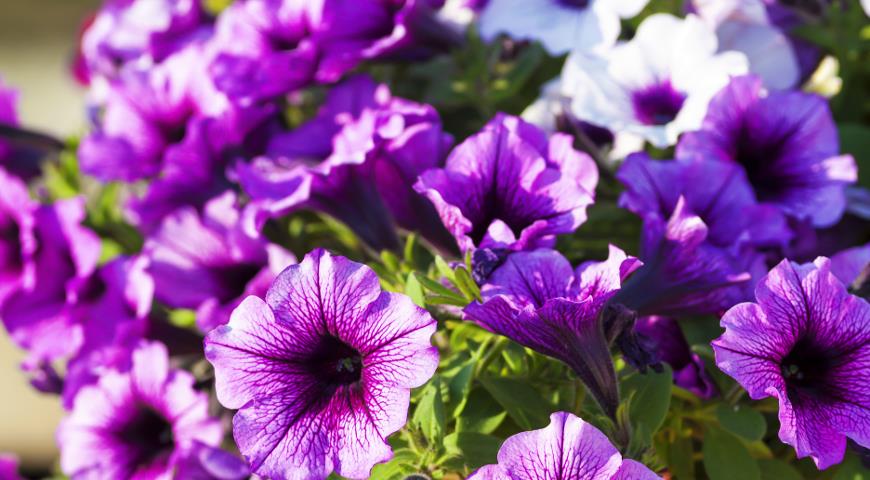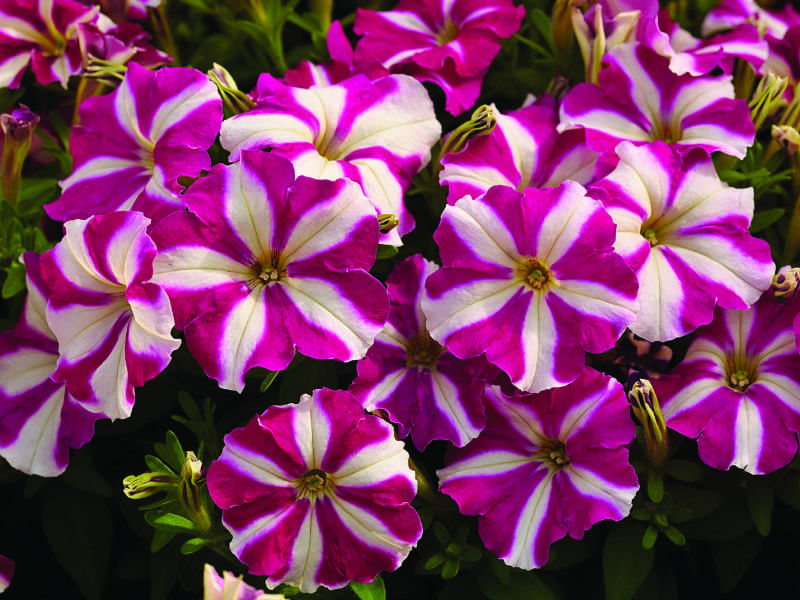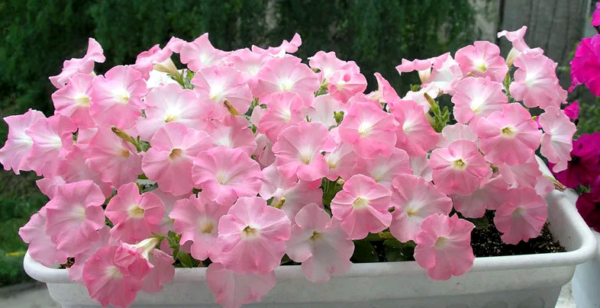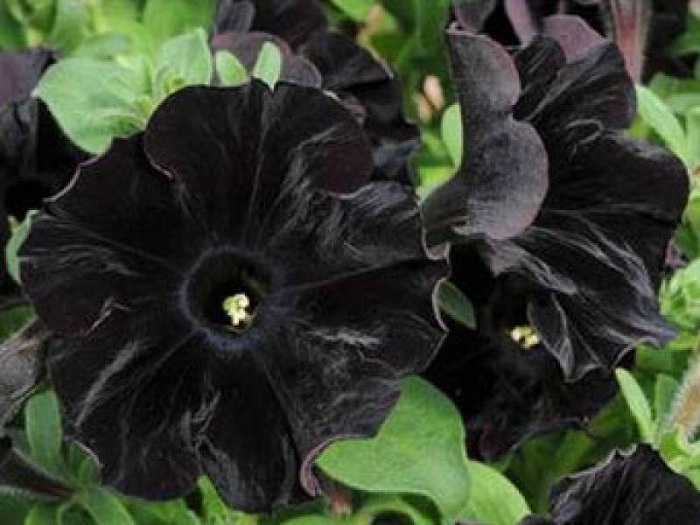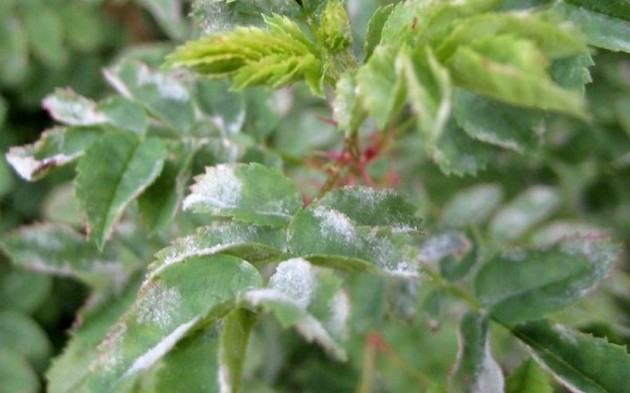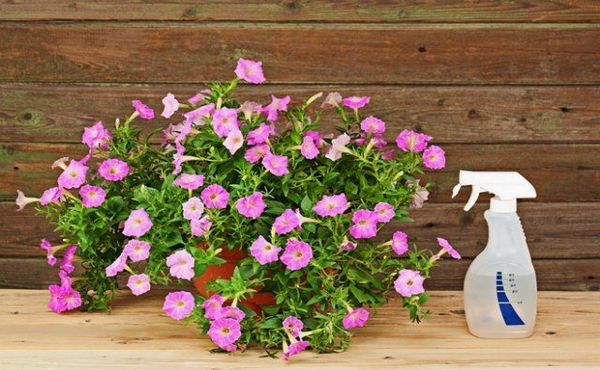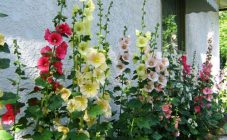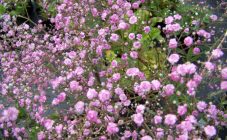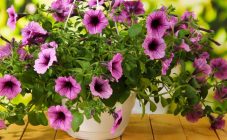Content:
One of the most popular flowers among summer residents and gardeners are petunias. The forms, colors, sizes of this plant are varied. From year to year, breeders develop new varieties of this species. And those who first saw a fabulously beautiful flower bed with these flowers soon become interested in the species and try to learn everything about petunias.
Description of culture
The plant belongs to the Solanaceae family, petunia can be perennial or annual. But usually in Russia it is grown as an annual crop. It is unpretentious, after transplantation it easily takes root, tolerates both heat and moderate cold.
What does it look like
All specimens of this species stand out for their beauty:
- excellent growth - this species is usually no higher than 50 cm, the diameter of the bush is up to 30 cm;
- beautiful branching of shoots and greenery (foliage 5-10 cm);
- represent a bushy form with a large number of colors, funnel-shaped, all kinds of rainbow colors (from light shades to black velvet);
- the flower is erect and creeping, and also large-flowered and multi-flowered.
Where grows
It is known that the petunia flower arrived in Europe and Russia from South America. In Brazil, in a country where it is warm all the time, perennial petunia grows. In addition to Russia, petunia conquered Europe and Asia with its appearance; the cultivation of this interesting flower is very popular here.
What soil does it grow on
For petunias, you need to choose a soil that contains a sufficient amount of nutrients and minerals. You do not need to take soil with a lot of peat - this will not work for flower seeds. The universal soil is ideal for seedlings and flowers, as well as TerraVita - it is based on coconut fiber, which gives the earth lightness and air permeability.
You can prepare the soil yourself, at home, for this you need to combine sand, turf and peat in a 2: 2: 1 ratio. For disinfection, the soil must be either spilled with boiling water, or ignited in the oven. After two days, you can plant seedlings in it.
Can blooming petunia be transplanted? Experts say: yes, this can be done easily. It is necessary to transplant directly from the ground. This method is called transshipment.
How the plant reproduces
Seeds need to be chosen correctly:
- ampel varieties for pots and flowerpots, seedlings are regularly pinched;
- bush varieties for flower beds;
- if you choose pelleted seeds for sowing, then you need to monitor the condition of the soil - it should always be moist, but ordinary seeds are not capricious;
- if you buy seeds from a mixture of varieties, it will be impossible to compose compositions with flowers, since the palette will be unpredictable.
After planting, the seeds will begin to germinate in a few days. After that, the sprouts desperately need sunlight, in the absence of it, it is better to turn on the lamps.As soon as the seedlings grow up, they are immediately transplanted into separate cups. A competent petunia pick is also necessary.
It is imperative to dive the petunia twice:
- the first time when two leaves appear;
- the second - exactly one month after the first time.
Transplanting petunia into open ground can be done as soon as each bush gets stronger and grows in separate cups. It is important to take into account the weather conditions.
Petunia has one paradoxical difference. Many gardeners, getting closer to this flower, wondered - surfiniya and petunia, what is the difference? The answer is very simple. In fact, hybrid surfiniya does not propagate by seeds, but only vegetatively - by cuttings. And since surfiniya is a perennial, it is quite easy for it to endure wintering, for this you need:
- in the fall, the uterine bush, cut to 20 cm and transplanted into a 5 liter pot;
- keep it first on the veranda, then at home in a cool place;
- in March, uterine surfiniya begins to wake up and grow, the planting material grows faster and stronger;
- in April, prepare and plant cuttings, they will begin to bloom in a month.
Varieties and varieties
There are more than twenty species of wild petunia in the world, as well as seventy breeding varieties. They are all different.
The classification and description of the varieties is as follows:
- Cascading - grow well to the sides, forming a lush, flowering bush. The stems are thick, the flowers are medium.
- Ampelnye - creeping, long shoots with numerous flowers. More often planted in hanging pots for the effect of "flowering curtains", or for the design of an "alpine slide".
- Shrub - not whimsical, grow in the form of a bush, you need to pinch the tops. Depending on the variety, the size of flowers can reach 15 cm.
- Floribunda - it has many flowers (medium and large) up to 10 cm in diameter. Feels great outdoors, and use it for a large landing.
Petunias are divided into classes according to the diameter of the inflorescences:
- Grandiflora - petunia, the flowers of which are considered the most catchy, flower size up to 16 cm;
- Multiflora - considered medium-sized, flower up to 6 cm;
- Milliflora - small flowers up to 4 cm and a small bush of the plant itself.
Among the cascading petunias, the following varieties can be distinguished:
- Tornado is a large-flowered variety. The bush reaches 1.5 m, flowering is abundant and long-lasting until frost.
- Typhoon - characteristics are similar to Tornado, but can grow in open ground up to 2 sq. m.
- Gioconda is the most popular among cascading petunias. The stems grow up to one meter, a huge number of flowers that bloom very early. Feels great both in the ground and in flowerpots.
Ampel petunias are also plentiful in varieties, here are just a few:
- Surfinia petunia - they tolerate bad weather remarkably, bloom for a very long time with a huge abundance of flowers of different shades. But, unfortunately, this plant is difficult to find (the reason is reproduction only in a vegetative way).
- Avalanche is a popular variety, lashes up to 70 cm long, large flowers up to 10 cm. Various colors.
- The Snow Queen - branches up to 80 cm long, numerous snow-white, with low tide, flowers up to 10 cm and the finest aroma.
- Black velvet is a mesmerizing, unusual black velvet-like flower. Plant height up to 35 cm, large inflorescences up to 8 cm.
There are also a huge variety of bush petunias:
- Pikoti is most popular for its unusual edging around the edge of the petals. The bushes grow up to 25 cm, the flowers are large, blooms all summer until frost.
- Polaris is a new variety, resistant to wind, heat and rain. It grows quickly up to 30 cm, blooms for a long time and abundantly.
Floribunda is distinguished by one of the best varieties called:
- Sonya - gorgeous huge flowers, grows beautifully in the sun and in the shade. The Sonya series consists of eleven hybrids.The most beloved Sonya Orchid with contrasting veins on the petals.
Positive properties of culture
The properties of the plant are little studied, and Chinese scientists prove the excellent beneficial effects of petunia aromas on the human body.
Research shows that the scent of flowers:
- activates the work of vital systems;
- increases efficiency;
- has a positive effect on the cardiovascular, nervous and digestive systems;
- immunity is strengthened.
About diseases and pests
Like any plant, petunia is susceptible to the following diseases:
- fungal diseases - powdery mildew, black leg;
- pests - aphids, whiteflies, spider mites.
When fighting powdery mildew, it is important:
- do not allow the bay of flowers;
- separate infected flowers from healthy ones, remove the top layer of soil near the flowers, since the fungus lives there and treat the plant with fungicides;
- will help spraying with a solution: from 30 gr. soda ash with 5 gr. liquid soap in a small bucket of water.
Preparations will help get rid of pests: Aktara and Taran. To avoid flower diseases, you need to take good care of them, create all the conditions for them for successful growth and flowering.
Useful information about the plant
It turns out that petunia flowers occupy one of the first places in the world in terms of their popularity, and the production of seeds of this beautiful flower takes one third of the production of seeds of all flowers. This is not surprising, because petunia is a fabulously beautiful, extraordinary flower. A variety of varieties and types, sizes, palettes and patterns, as well as a delicate and pleasant aroma - all this will literally turn the head of any person.
